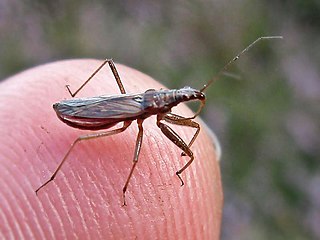
Nabis ericetorum is a species of damsel bug in the family Nabidae.

Nabis flavomarginatus is a species of damsel bug in the family Nabidae.

Nabis lineatus is a species of damsel bug in the family Nabidae.
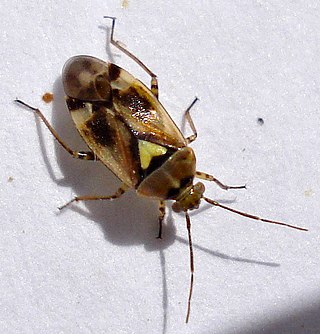
Orthops basalis is a species of plant bug belonging to the family Miridae, subfamily Mirinae that can be found everywhere in Europe except for Azores, Bosnia and Herzegovina Faroe Islands, Iceland and Cyprus. then east across the Palearctic to Central Asia and Siberia.

Neides tipularius is a Palearctic stilt bug. It occurs from the Northern Mediterranean to Scandinavia and the British Isles. Further east it is found in Asia minor and the Caucasus to Central Asia. In Germany and the Alps it is widespread and not uncommon. In Britain it is locally common in large parts of the South. In Ireland it is rare.
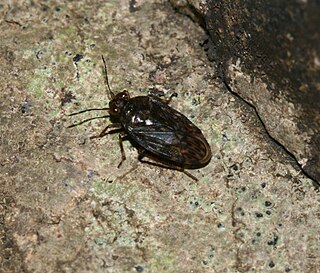
Saldula saltatoria is a Holarctic shore bug with a circumboreal distribution. It is widespread in central Europe and is the most common of the shore bugs, and often occurs in large numbers.

Macrosaldula scotica is a predatory species of true bug, from the family Saldidae in the order Hemiptera from the western Palearctic.

Metatropis rufescens is a species of true bugs. The species is found in Europe, with the exception of the far North and South then East to the Black Sea region and across the Palearctic to Siberia. In Central Europe it is common, but it is not found everywhere. In the British Isles it is common in the South including Wales and Ireland. It occurs in shady, mostly moist habitats in deciduous forests.
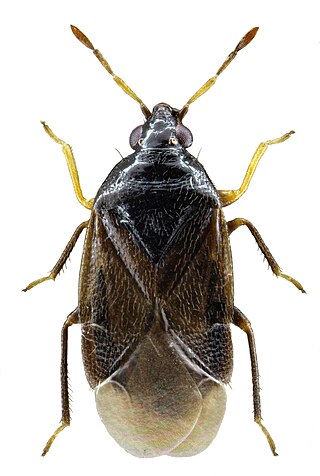
Orius niger is a true bug. The species is found in the Palearctic from Europe east to Siberia and across Central Asia to China and India. It is widespread in Central Europe mostly in the south. In the Alps it is found up 1600 meters above sea level.
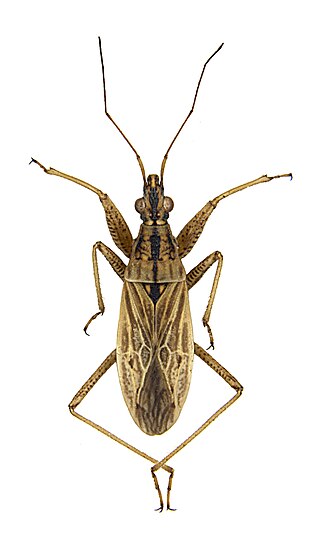
Nabis rugosus, the common damsel bug, is a predatory true bug. The species is found in the Palearctic. It is found in Europe from the North edge of the Mediterranean to southern Scandinavia. Further east, the distribution extends east across the Palearctic to Central Asia and Siberia. The species occurs everywhere in Central Europe and is found in the lowlands, as well as in the central uplands and in the Alps up to about 1500 meters above sea level. It is Central Europe's most common species of sickle bug and it is found in many different habitats, open, dry, shaded and moist; but it prefers moderately moist, half shady places with dominant grass. Adjacent woodland vegetation is equally important.
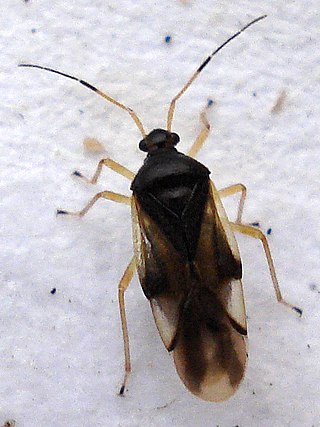
Bryocoris pteridis is a true bug in the family Miridae. The species is found in Europe from Ireland in the West and including the northern edge of the Mediterranean and the East across the Palearctic to Siberia.In Central Europe, it is widespread and occurs both in the central uplands and the Alps up to 1500 metres above sea level.

Monalocoris filicis is a true bug in the family Miridae. The species is found in Europe from Ireland in the West and including the northern edge of the Mediterranean and the East across the Palearctic to Central Asia, Korea and Japan. In Central Europe, it is widespread and generally common. In the Alps, it occurs up to the edge of the forest. Habitats are deciduous and coniferous forests and moist, open habitats such as bogs or the shores of streams.
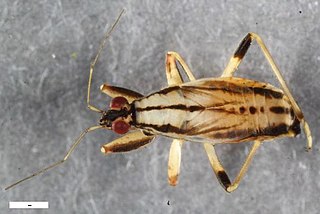
Himacerus boops is a species of damsel bug in the family Nabidae. It is found from South Scandinavia and the South of the British Isles over Western and Central Europe and East across the Palearctic to Siberia and in the Caspian region. They are not present in most parts of the Mediterranean.
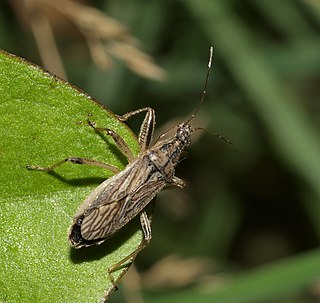
Himacerus major is a species damsel bug in the family Nabidae. It is found in the Holarctic. The range is from South Scandinavia and the South of the British Isles over West Europe including the Western Mediterranean, Central Europe and Eastern Europe and in the Caucasus. It is also found in North America. Himacerus major occurs in many different habitats with grass, regardless of the level of humidity. The species occurs on very dry dune habitats, and nutrient-poor grasslands,as well as wet shores of waters without woody vegetation and salt places inland. The species occurs in very large numbers near the coast of the Northern Baltic Sea. It is absent from woodland.

Drymus brunneus is a species of dirt-colored seed bug in the family Rhyparochromidae found in the Palearctic. In the West Palearctic it is lacking only in the far north of Northern and Eastern Europe. In the East, the species ranges to the Caucasus and Siberia.
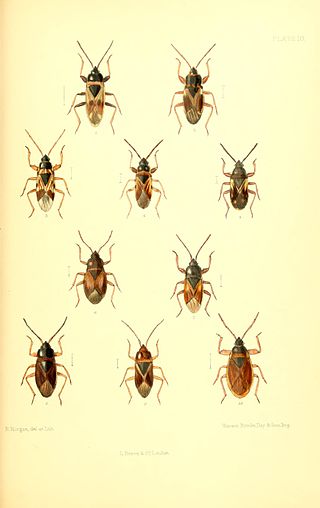
Taphropeltus contractus is a species in the family Lygaeidae. It is found in the West Palearctic - in Europe, excepting the far North. In the South of Europe the distribution includes the Mediterranean Basin including North Africa. The East limit is the Caucasus. In Central Europe the species is widespread and it is not uncommon in the South. North of the central uplands, it occurs but only locally. The species occurs only in warmer in the Alps. It prefers half shady, dry warm habitats.

Orthonotus rufifrons is a species of plant bugs belonging to the family Miridae.

Plagiognathus arbustorum is a species of insects in the family Miridae, the plant bugs.

Blepharidopterus angulatus, the black-kneed capsid, is a species of plant bug in the family Miridae. It is found in North Africa, Europe East across the Palearctic to Central Asia and in North America.
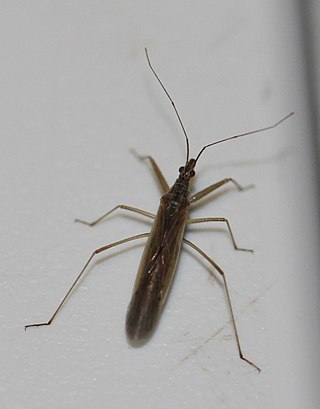
Nabis capsiformis, the pale damsel bug, is a species of damsel bug in the family Nabidae. It is found in Africa, the Caribbean, Europe and Northern Asia, Central America, North America, Oceania, and South America.





















